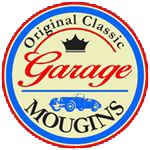
901 (1964)
In September 1963, Porsche presented the Porsche 901 at the IAA in Frankfurt as a successor to the Porsche 356.
Series production of the 901 began in September 1964. When Porsche presented the vehicle at the Paris Motor Show in October of that year, the French car manufacturer Peugeot objected to the model designation. The reason: Peugeot had trademarked a three-digit type designation with a zero in the middle.
Porsche therefore renamed the 901 as the 911. This combination of numbers is the same as the emergency number in the USA and was therefore already well known in this key market for Porsche. 82 units of the 901 were produced before the name change.

911 (1964-73)
In September 1963, Porsche presented the Porsche 901 at the IAA in Frankfurt as a successor to the Porsche 356. One year later, as of model year 1965, series production of the model began and it was renamed the 911 shortly thereafter.
Originally built only as a Coupé, the 911 had an integral body-frame and was powered by a new 2.0-litre flat-six engine, which initially delivered 130 hp.
As of model year 1967, the 911 was also available as a "safety cabriolet" (Targa) with permanently mounted roll-over bar and removable soft top. As of model year 1969, the wheelbase was lengthened by 57 mm, resulting in increased driving comfort and simultaneously more stable driving dynamics.
The 911 S, the first engine derivative of the 911, was also launched on the market. In the years that followed, models bearing the additional designations T, L and E were launched.
911 Targa (1967-1973)
Porsche introduced the Targa model in response to increased safety requirements for open-top vehicles in the USA. Thanks to the fixed bar, the occupants were protected from injury in the event of the vehicle overturning.
911 S (MY 1967-73)
Due to various engine modifications, the sports version of the 911 initially had a power output of 160 hp, ultimately increasing to 190 hp. In addition to superior equipment, the S model was the first 911 to be given "Fuchs" rims with their distinctive 5-spoke design.
911 T (MY 1968-73)
The "Touring" version became the new entry-level model in the 911 family, initially developing 110 hp and later 130 hp. Its equipment matched that of the four-cylinder 912 model. One of the ways in which it could be distinguished from more powerful models was the fact that it had a silver rather than a gold logo.
911 L (MY 1968)
With the introduction of the T version as the new standard model, with a less powerful engine and 4-speed manual transmission, the previous 911 was renamed the 911 L. The engine remained unchanged.
911 E (MY 1969-73)
The existing 2.0-litre engines entered their final year of construction in MY 1969 and were replaced by new 2.2-litre engines. The L version was renamed the 911 E following the introduction of the new generation of engines and delivered power outputs of between 140 hp and 165 hp.

912 (1965-69)
To bridge the price gap between the 356, which was still being produced at this time and the 911, in 1965 Porsche launched the 912 – a less expensive and significantly less powerful variant of the 911.
In terms of looks and technology, the 912 was virtually identical to the 911. Unlike the 911, however, it was powered by the 1.6-litre flat-four engine from the 356 SC at the rear. Its power output was reduced from 95 to 90 hp at 5,800 rpm for use in the 912 in order to give the engine more low-end torque and stability. Power transmission was provided by a 4-speed manual transmission.



